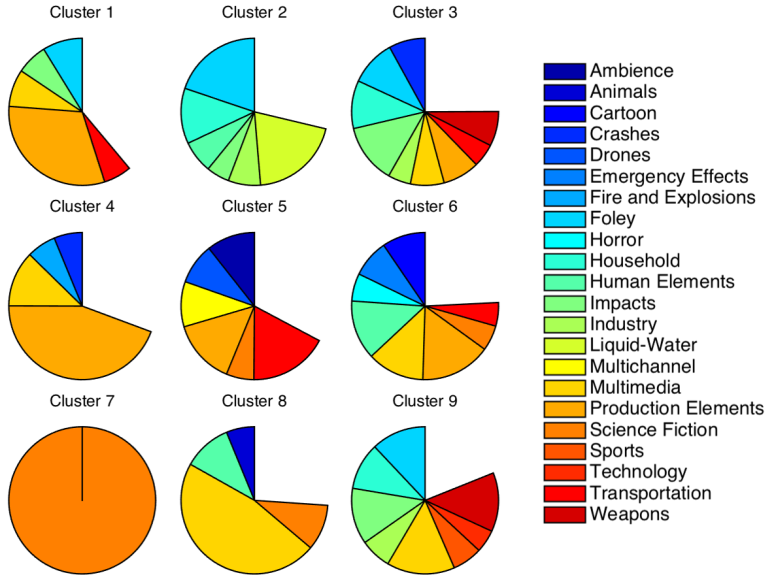
Automatic microphone mixers have been around since 1975. These are devices that lower the levels of microphones that are not in use, thus reducing background noise and preventing acoustic feedback. They’re great for things like conference settings, where there may be many microphones but only a few speakers should be heard at any time.
Over the next three decades, various designs appeared, but it didn’t really grow much from Dan Dugan’s original Dan Dugan’s original concept.
Enter Enrique Perez Gonzalez, a PhD student researcher and experienced sound engineer. On September 11th, 2007, exactly ten years ago from the publication of this blog post, he presented a paper “Automatic Mixing: Live Downmixing Stereo Panner.” With this work, he showed that it may be possible to automate not just fader levels in speech applications, but other tasks and for other applications. Over the course of his PhD research, he proposed methods for autonomous operation of many aspects of the music mixing process; stereo positioning, equalisation, time alignment, polarity correction, feedback prevention, selective masking minimization, etc. He also laid out a framework for further automatic mixing systems.
Enrique established a new field of research, and its been growing ever since. People have used machine learning techniques for automatic mixing, applied auditory neuroscience to the problem, and explored where the boundaries lie between the creative and technical aspects of mixing. Commercial products have arisen based on the concept. And yet all this is still only scratching the surface.
I had the privilege to supervise Enrique and have many anecdotes from that time. I remember Enrique and I going to a talk that Dan Dugan gave at an AES convention panel session and one of us asked Dan about automating other aspects of the mix besides mic levels. He had a puzzled look and basically said that he’d never considered it. It was also interesting to see the hostile reactions from some (but certainly not all) practitioners, which brings up lots of interesting questions about disruptive innovations and the threat of automation.

Next week, Salford University will host the 3rd Workshop on Intelligent Music Production, which also builds on this early research. There, Brecht De Man will present the paper ‘Ten Years of Automatic Mixing’, describing the evolution of the field, the approaches taken, the gaps in our knowledge and what appears to be the most exciting new research directions. Enrique, who is now CTO of Solid State Logic, will also be a panellist at the Workshop.
Here’s a video of one of the early Automatic Mixing demonstrators.
And here’s a list of all the early Automatic Mixing papers.
- E. Perez Gonzalez and J. D. Reiss, A real-time semi-autonomous audio panning system for music mixing, EURASIP Journal on Advances in Signal Processing, v2010, Article ID 436895, p. 1-10, 2010.
- Perez-Gonzalez, E. and Reiss, J. D. (2011) Automatic Mixing, in DAFX: Digital Audio Effects, Second Edition (ed U. Zölzer), John Wiley & Sons, Ltd, Chichester, UK. doi: 10.1002/9781119991298. ch13, p. 523-550.
- E. Perez Gonzalez and J. D. Reiss, “Automatic equalization of multi-channel audio using cross-adaptive methods”, Proceedings of the 127th AES Convention, New York, October 2009
- E. Perez Gonzalez, J. D. Reiss “Automatic Gain and Fader Control For Live Mixing”, IEEE Workshop on Applications of Signal Processing to Audio and Acoustics (WASPAA), New Paltz, New York, October 18-21, 2009
- E. Perez Gonzalez, J. D. Reiss “Determination and correction of individual channel time offsets for signals involved in an audio mixture”, 125th AES Convention, San Francisco, USA, October 2008
- E. Perez Gonzalez, J. D. Reiss “An automatic maximum gain normalization technique with applications to audio mixing.”, 124th AES Convention, Amsterdam, Netherlands, May 2008
- E. Perez Gonzalez, J. D. Reiss, “Improved control for selective minimization of masking using interchannel dependency effects”, 11th International Conference on Digital Audio Effects (DAFx), September 2008
- E. Perez Gonzalez, J. D. Reiss, “Automatic Mixing: Live Downmixing Stereo Panner”, 10th International Conference on Digital Audio Effects (DAFx-07), Bordeaux, France, September 10-15, 2007
